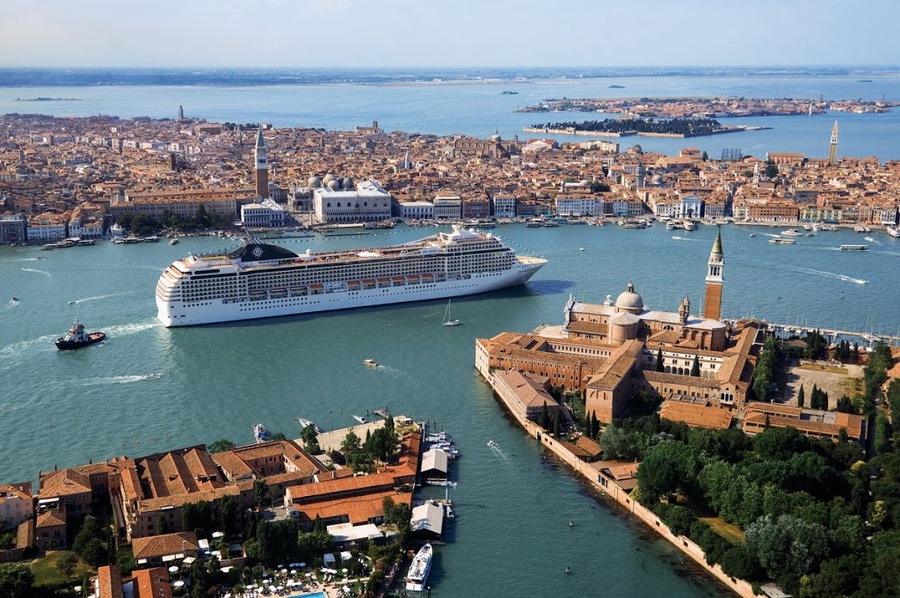Large ships sailing in and out of Venice could become a thing of the past

The long-running row over large cruise ships entering the Venice lagoon escalated recently with the news the Italian government is considering a law to ban them entirely.
The environment committee of Italy’s parliament is at the review stage of a bill, which could give the city council powers over the surrounding waters. A ministerial decree was issued in March banning ships over 40,000 tonnes — mid-sized ships — from sailing too close to the Doge’s Palace, but it will only come into force once an alternative solution has been found.
Following the Costa Concordia disaster, UNESCO appealed to the Italian authorities to ban large ships from entering the San Marco basin and Giudeccia canal, due to the environmental damage they cause. Increasing numbers of ships are mooring in the port, at the end of the Grand Canal. But although the authorities agreed in principle nothing has changed.
The senator for Venice Felice Casson want to go a stage further –- banning all ships of more 30,000 tonnes from entering the lagoon. Casson wants the ships to dock outside either at Malamocco or a custom-built offshore port near the future Mose barrier . He told The Guardian: “In the meantime, Port Marghera could fill the gap.”
A 30,000-ton ship is classified as “small” by today’s standards; P&O’s Adonia is 30,200 tons and carries 710 people, for example.
Locals, particularly those belonging to campaign groups including Italia Nostra and the No Big Ships committee, have long been up in arms about the close approach made by cruise ships sailing along the city’s Giudecca Canal to the cruise terminal.
This row escalated with the arrival of the new MSC Divina, one of the largest ships ever to visit the historic city. Divina was greeted with huge banners saying ‘No Grandi Navi’ (‘No big ships’). Venice, as one of the busiest ports in the Mediterranean, depends heavily on cruise tourism.
“The two or three big cruise operators which control international business have massive clout,”said Francesco Bandarin, Unesco assistant director general for culture.
The head of the local council, Giorgio Orsoni, worries about the damage to the city’s foundations from ships passing through the Giudeccia canal, only 10 metres deep. The water they displace acts as a pump for the seabed, shaking even the San Marco basilica.
“We are victims of the state,” Orsoni added. “The big cruise ships deal with the port authorities who report to central government. pay €40,000 ($49,000) each time they moor, with 3,500 calls a year, but Venice gets nothing out of it. The 2 million passengers who disembark spend very little, maybe just buying a drink.”
The state of the lagoon is a deep cause of concern. “The wash churned up by the ships is hollowing out the seabed and gradually turning the lagoon into an inlet of the Adriatic,” warned Angelo Marzollo, the author of a Unesco report. “The erosion is particularly bad in the southern part.”
I have personally sailed out of Venice and I found it to be a fantastic experience, it seems like this might not last forever so if this is on your “to do” list, it may be worth considering sooner, rather than later.
About Me

I started at Cruise.co.uk back in April 2009. I was new to the travel industry as my previous work was within the mortgage industry, due to the credit crunch (and being made redundant) this wasn't a great industry to be in so I looked for something new which is when…
Read more
